He cracked jokes the whole time, one gallery attendant said. He was right as rain, said the other. Right as rain! That is what she said. And then he was gone, and they found themselves in what felt like his tomb, even though it wasn’t a tomb, or if it were it would be the tomb of a lively and not a deathly ghost, the afterimage of an artist who would not want his death to overtake his living art.
His art lived on, receiving visitors, continuing its run even after the artist’s had ended, aged 68, on December 23, without warning or explanation. They couldn’t help but wonder, and fair enough: Did he know he was dying? Because now, it felt absurdly obvious that the art knew. The exhibition, called Hospital, meant one thing on December 22 and another on December 24, and how could it not? I will explain, but first, background.
The artist was Pope.L, and he was great. “Great artist” is not a term I throw around. I would teach his 1978 performance work to art students back in the day, and they lit up, universally, because what he did was powerful, simple, complex, ridiculous, extra, brave. He scrambled bad realities — race and class in America, chiefly — in ways that produced horror, humor, good trouble. In 1978, young and with no money for materials, he got down on the ground and crawled West 42nd Street in New York City, wearing a business suit with a yellow square sewn on the back. (His father and aunt were actually unhoused at the time; in a later version of the crawl, he held a potted flower in one hand, both because he felt he wasn’t working hard enough and as a way to reach people who might not know what art was but did know what a flower was and what crawling was.) And in photographs documenting the crawls, it’s the faces of passersby — some never noticing him, some registering shock, confusion, anger, fear, disdain — that perform the performances along with him. Here was a young Black American male in glasses and a suit with a flower, crawling, alongside your commute, your trip to the strip club or the bodega, your requests for spare change, your tourism. He offered something between a breathing, sweating Rorschach and an electrical current testing a tangle of late 20th-century American nerves.
Forty-five years later comes Hospital, the exhibition that has turned out to be the last of his life (it was his first institutional exhibition in the UK, at the South London Gallery). The multiple installations in multiple rooms across two buildings are remixes of earlier works, including a 2000 performance titled Eating the Wall Street Journal, in which he sat on a raised toilet throne in a darkened messy gallery, wearing only a jock strap, his body smeared with white dust (“You always want a bit of whiteness around,” he’s said, ha ha), eating the newspaper and washing it down with milk. The Journal had advertised that you only needed to buy the paper in order to succeed in business; Pope.L would take the capitalist talisman into his moist mouth and guts as if it were the wafer body of Christ.
This time around, Eating the Wall Street Journal is subtitled Mother Version. It involves the white porcelain toilet again, this time scaffolded by a wood structure painted white like a ghostly roller coaster. At first, I saw a wreck, but I didn’t notice the time element, the crash. The toilets – multiple, identical – are positioned as if they are hurtling through space from a great height down to the floor of the gallery, like film stills from a disaster. “Dust — sprinkle at will,” the text on the wall says above bowls of white calcium carbonate, so you find yourself sprinkling – as if ashes – onto the scene. What you sprinkle is impossibly soft in your hands. Ashy, my hands were unavailable to wipe what I suddenly discovered were my streaming tears. How did this weeping come over me? Answers arrived in waves: everything is coming to ruin, it appeared, from Gaza to wildfire to January 6 to the shuttering of local public schools and newsrooms. To my changing, aging body, facing 50, almost as old as Pope.L’s first crawl. To Pope.L, this artist I trusted, admired. This artist I loved.
Onion-like, any art by Pope.L has layers (not all make me cry). The walls and floor of Hospital are despoiled by the brownish drips from wall installations using bottles of cheap alcohol — toxic self-medication — that at the artist’s request are refilled and re-spilled each week of the show’s duration. The contamination of this room is uncontained, and there are neon-orange vinyl panels signaling “danger” that you have to push through to get into this gallery, with its lighting so fluorescent and white that it strobes in a video taken with an iPhone, and its institutional pink walls, cloying like the stock photos of puppies tacked to ceilings above gynecological exam tables.
In another, separate series of installations that are also part of Hospital, Pope.L has strewn marigolds on the floor for people to walk on, to crush, those flowers of Dia de los Muertos. These, too, are replenished occasionally, and like the dust, you track them around with you. They are on a floor at the base of a staircase. I watched from above as my husband walked among the field of orange bits, looking small and vulnerable, precious. In another room, also with a pink wall and marigolds on the floor, Pope.L has left the orange plastic top of a hospital sippy cup with the accordion straw in it, spotlit and alone like a fallen soldier with marigolds strewn at its side, lying inert, its service finished.
How does he do so much with so little? How can he make scraps of cheap, bright plastic convey nobility, sorrow? Not how can he, I mean: How could he. He can’t anymore. Why do marvelous things have to end? Like a child, I cried in search of consolation. No can do, I responded.
Later that night, awakening from sleep in the wee hours, my sense of humor and perspective would begin to creep back into the picture. The death of an artist is not the meaning of his work. I know that! Plus, this is a bunch of toilets, after all, and it is pink and orange and made of flowers and drunkenness and excess and, my god, Pope.L was cracking jokes the whole time. He would not want to have reduced some white lady to an inert pile of despair, this man who knew from pain but was right as rain.
And yet — those of us who saw Hospital had looked at it from both sides now, I guess. We had no choice but to feel it all, and I am grateful. I feel extremely lucky to have visited Pope.L in Hospital. Because of it, there is a part of me for which he will always be in the process of making a full recovery from the diagnosis of his own death.
(Please do watch the video below. As I just said to my husband, “It’s so good. It’s so good.”)




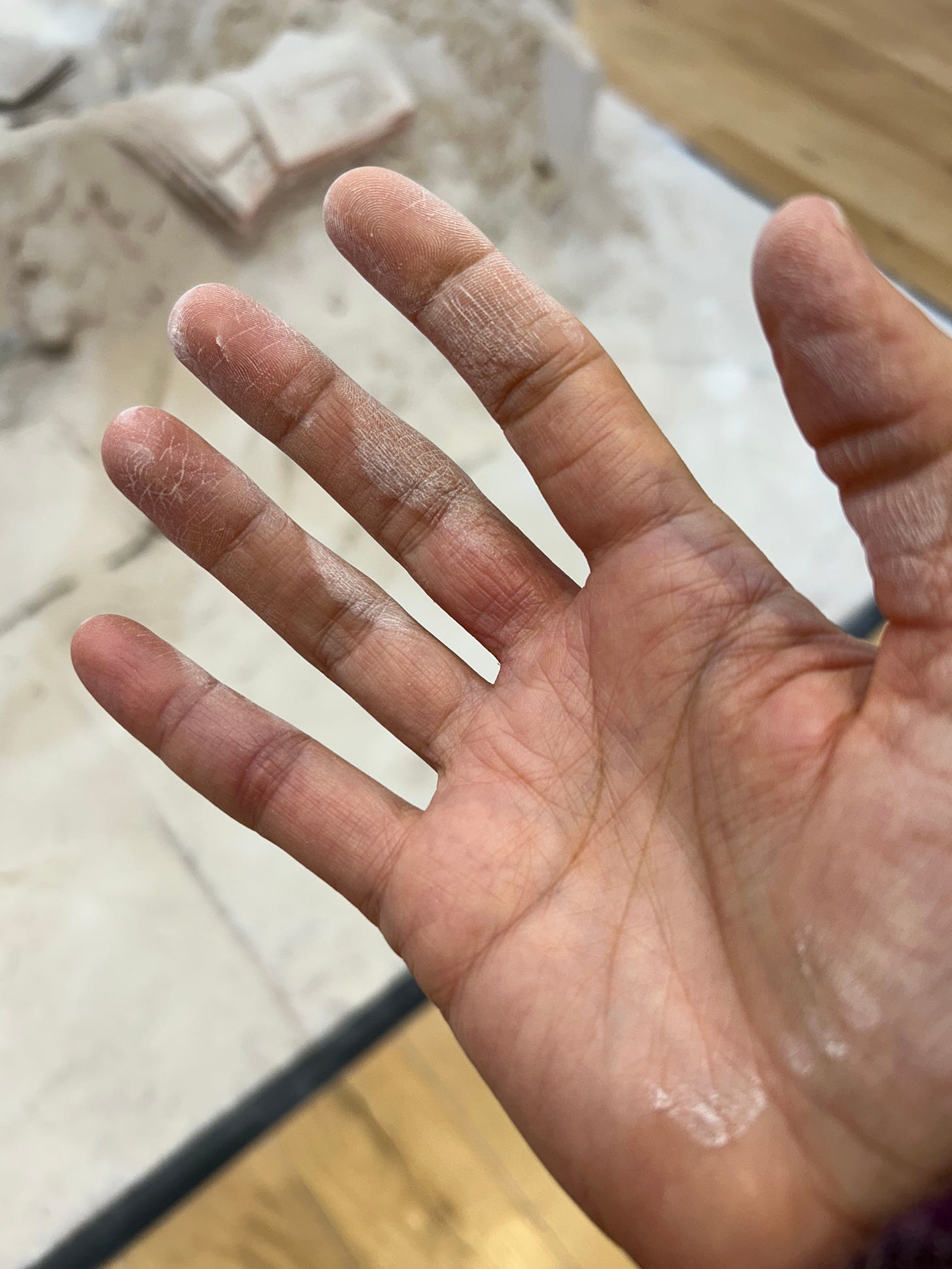
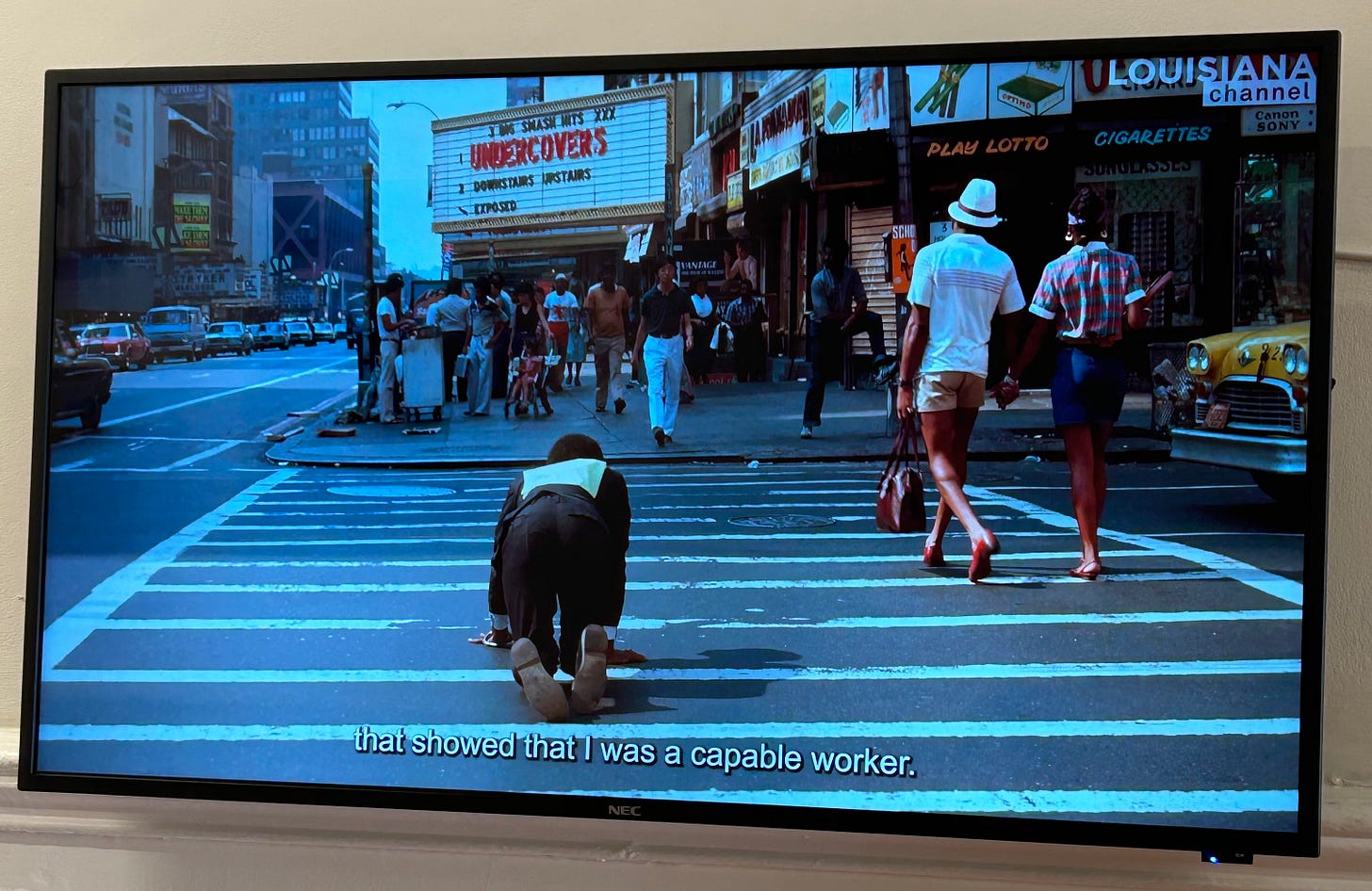
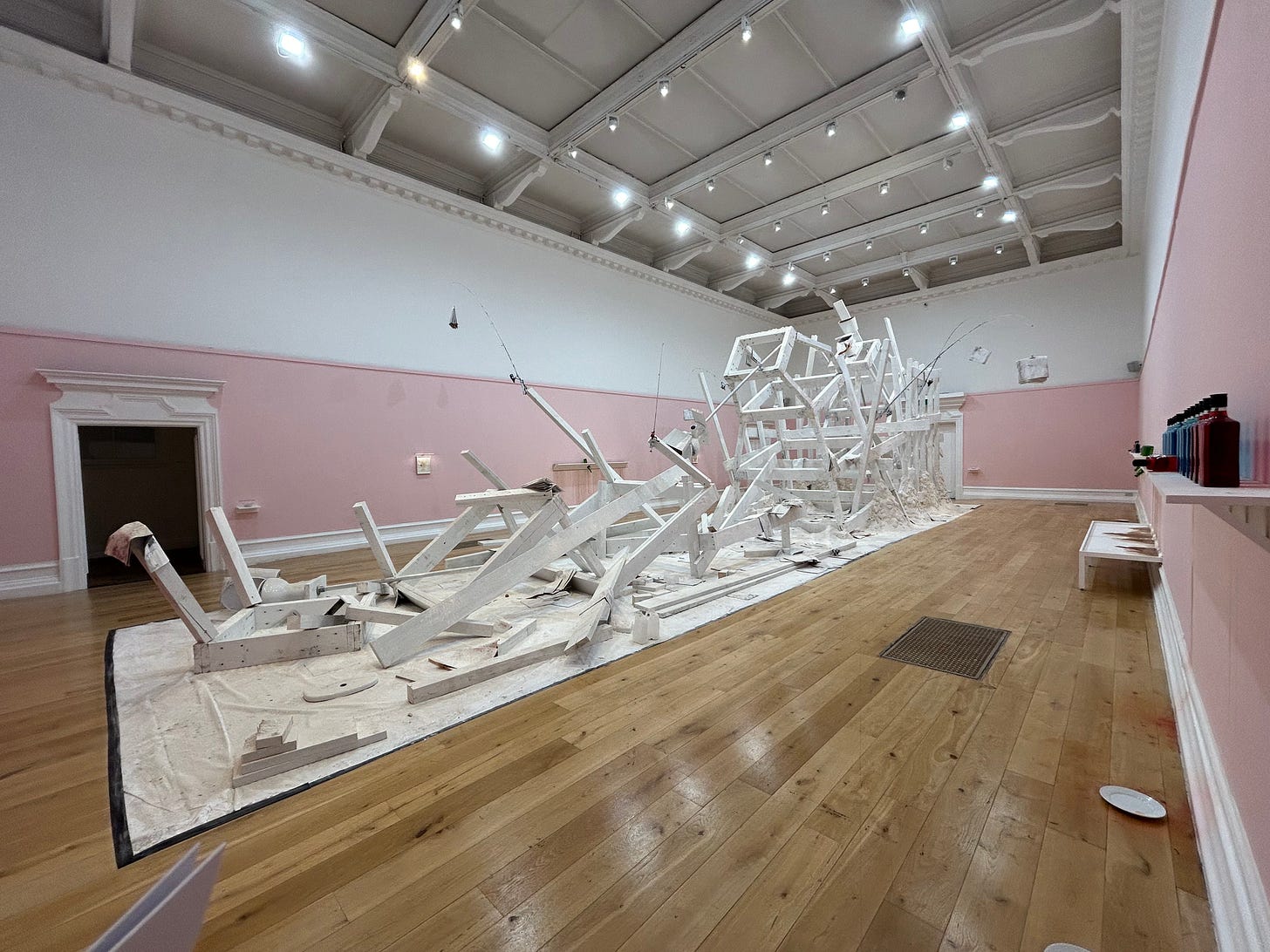
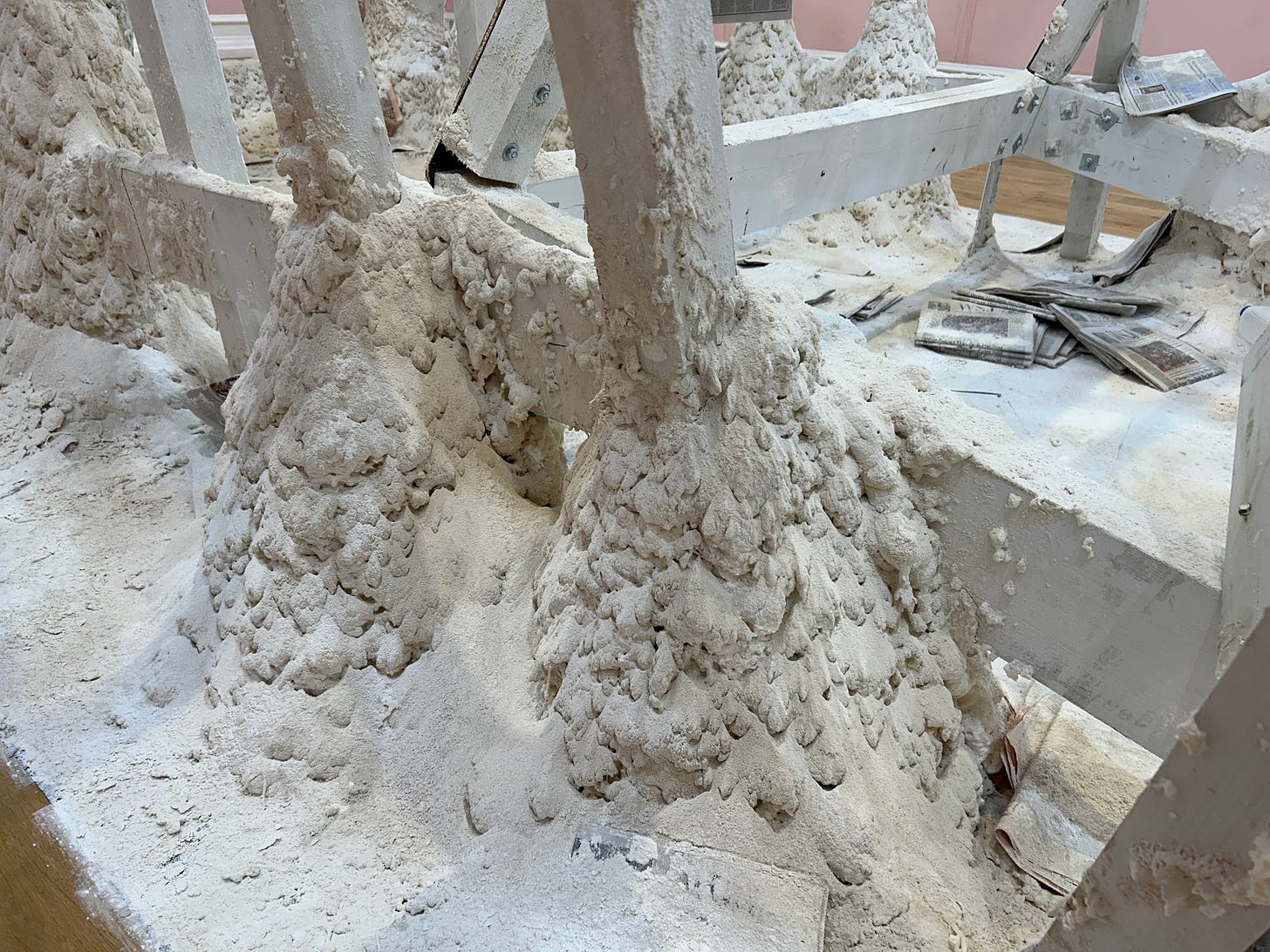
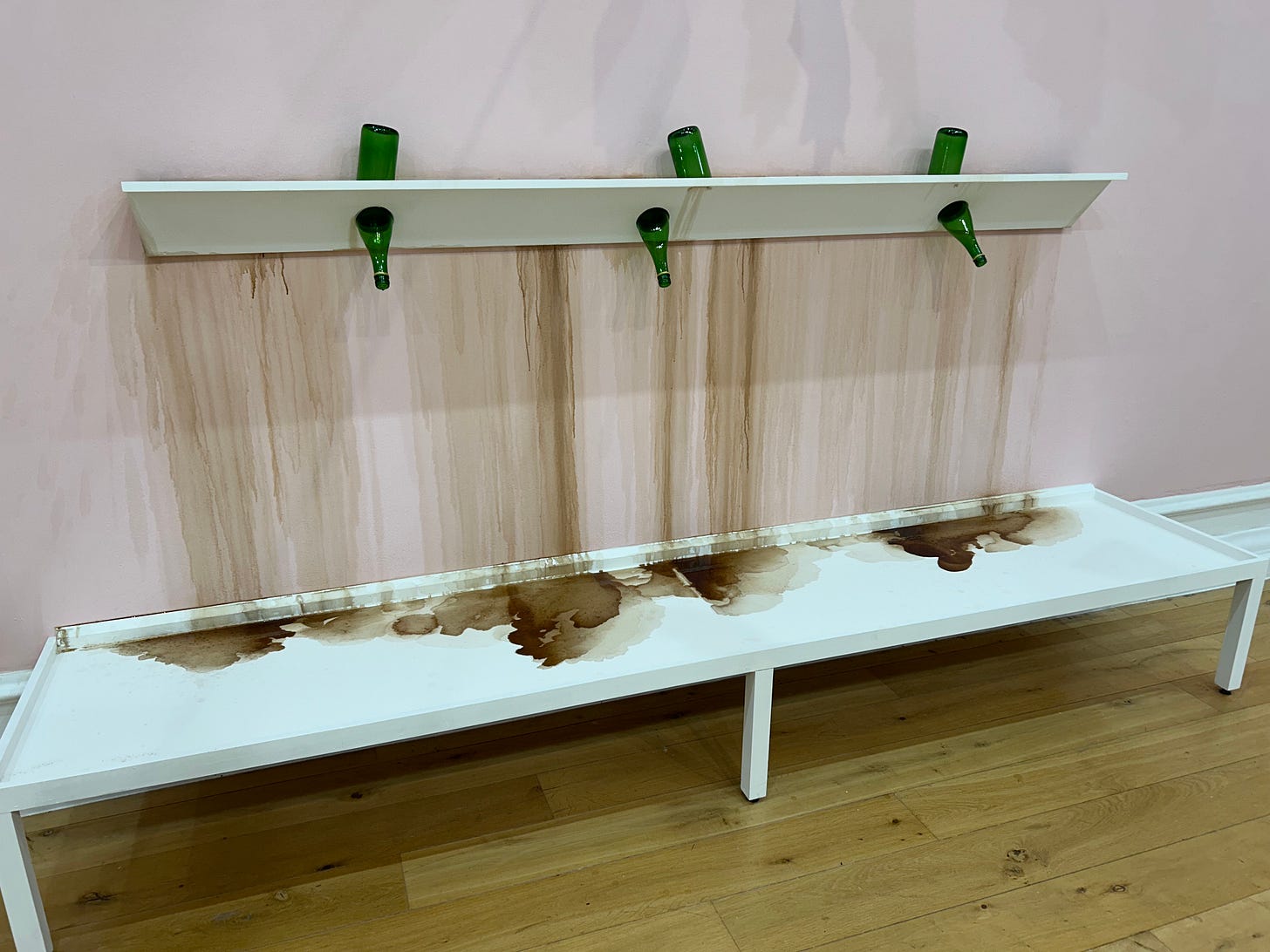
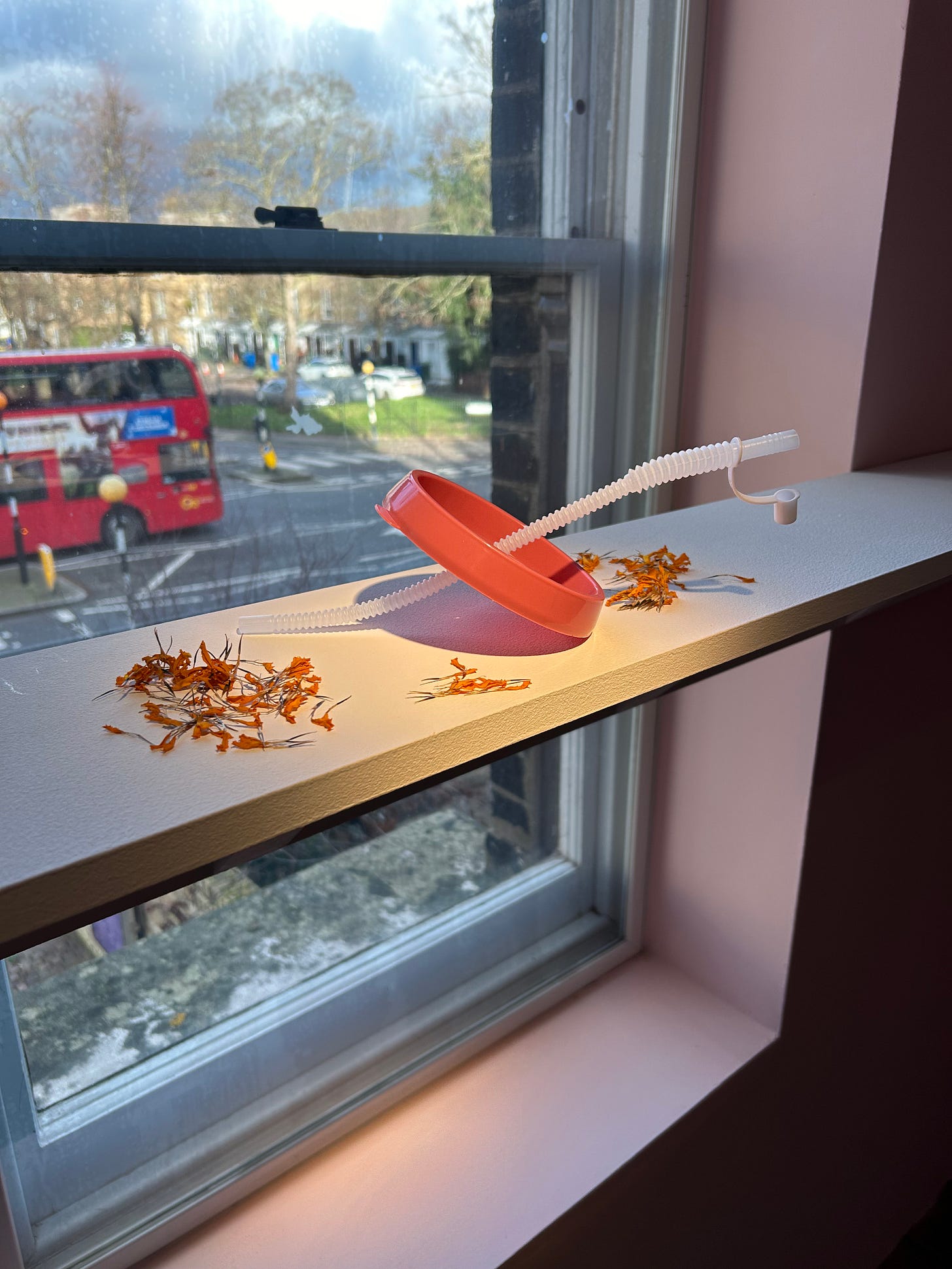
Thanks so much Jen. Your witnessing, visiting, sharing - it’s a loop we need. It’s like everywhere is a Hospital - he got it, you get it and then through him and you we get it. What a gift. Not so much strangers anymore.
This is exquisitely beautiful, Jen. I kept finding new lines in this piece that I fell in love with. I'm so happy to read your writing again, on art, in which you have created a piece of art yourself.